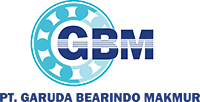It is used in the clutch of a manual transmission car, and is designed to endure high temperature and high speed rotation.
In addition, it is center-adjustable, with the structure that enables it to hold the adjusted center.
Our hub bearings incorporate a sealed-type construction to deliver a sensor-integrated hub bearing. This design helps to prevent damage, corrosion, and adhesion of iron powders to the internal magnetizing encoder and the sensor probe–and makes our ABS sensors all the more reliable. Timken pinion bearings offer durability and peace of mind. Known the world over, Timken bearings are precision-engineered to provide you with superior quality, along with energy-efficient and cost-effective friction management. For a proper fit that will run smoothly, these single-row tapered roller bearings are your best bet when replacing old and worn pinion bearings. Timken bearings are available for dozens of axle types; choose the models that match your vehicle specs. The belt tensioner is used to give tension to the belt, and is designed so that the center of rotation can move.
The idler ball bearing is used to change the direction of the belt or to adjust the width of contact to the pulley.
Both can endure high temperature and high speed rotation, and habe the structure designed to withstand vibration of the belt, taking into consideration the engine near which they are used. A wheel bearing is a set of steel balls held together by a metal ring called a race. They help wheels spin fast with as little friction as possible. They are used on all kinds of vehicles, from bicycles to aircraft and cars. On a car, a wheel bearing rides on a metal axle shaft and fits tightly inside the hub, which is a hollow chunk of metal at the center of the wheel. The hub holds the lug bolts that you use to bolt the tire onto the wheel. The wheel bearing is pressed into the hub from the back.





